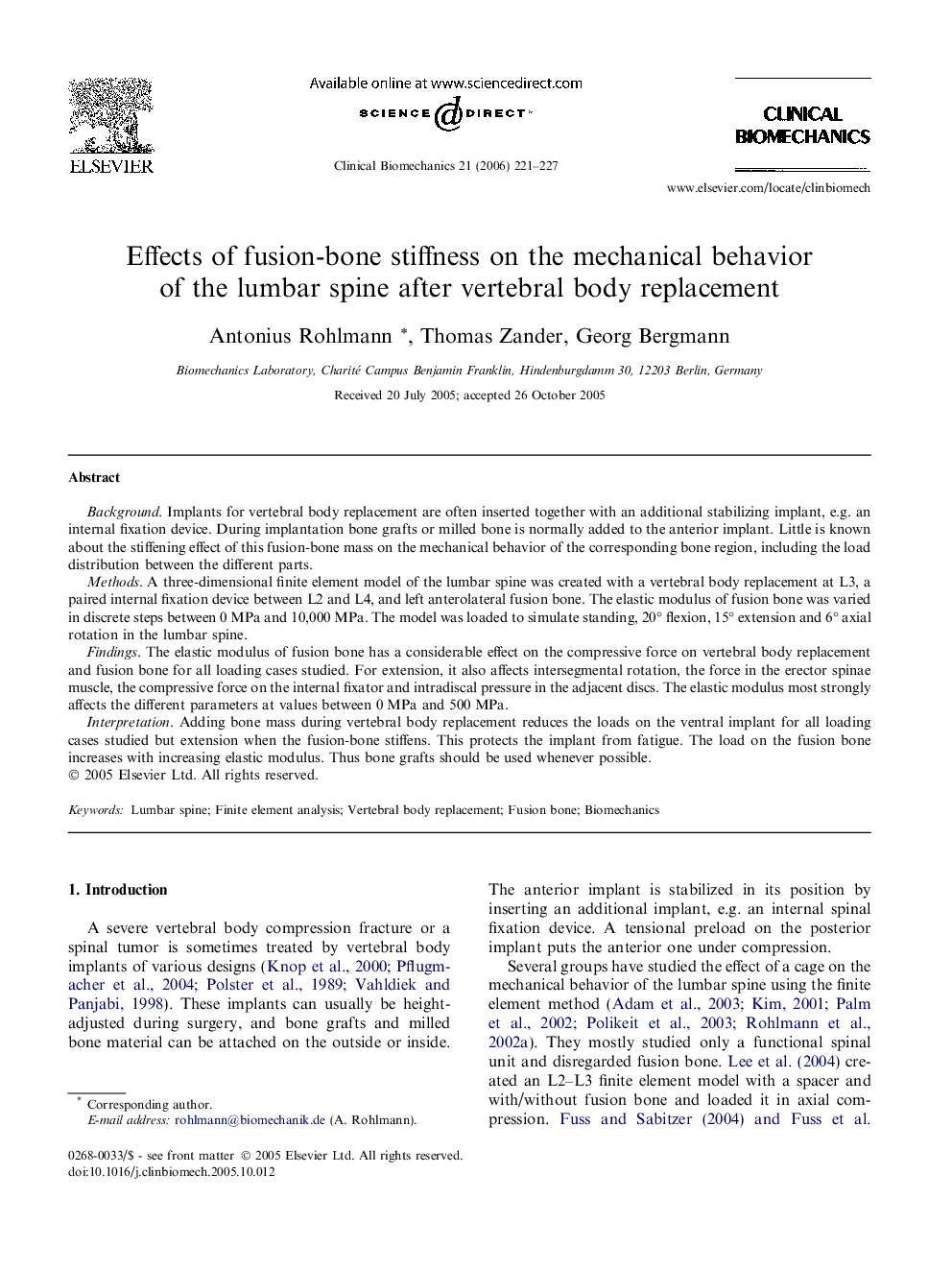| Article ID | Journal | Published Year | Pages | File Type |
|---|---|---|---|---|
| 4051646 | Clinical Biomechanics | 2006 | 7 Pages |
Background. Implants for vertebral body replacement are often inserted together with an additional stabilizing implant, e.g. an internal fixation device. During implantation bone grafts or milled bone is normally added to the anterior implant. Little is known about the stiffening effect of this fusion-bone mass on the mechanical behavior of the corresponding bone region, including the load distribution between the different parts.Methods. A three-dimensional finite element model of the lumbar spine was created with a vertebral body replacement at L3, a paired internal fixation device between L2 and L4, and left anterolateral fusion bone. The elastic modulus of fusion bone was varied in discrete steps between 0 MPa and 10,000 MPa. The model was loaded to simulate standing, 20° flexion, 15° extension and 6° axial rotation in the lumbar spine.Findings. The elastic modulus of fusion bone has a considerable effect on the compressive force on vertebral body replacement and fusion bone for all loading cases studied. For extension, it also affects intersegmental rotation, the force in the erector spinae muscle, the compressive force on the internal fixator and intradiscal pressure in the adjacent discs. The elastic modulus most strongly affects the different parameters at values between 0 MPa and 500 MPa.Interpretation. Adding bone mass during vertebral body replacement reduces the loads on the ventral implant for all loading cases studied but extension when the fusion-bone stiffens. This protects the implant from fatigue. The load on the fusion bone increases with increasing elastic modulus. Thus bone grafts should be used whenever possible.
